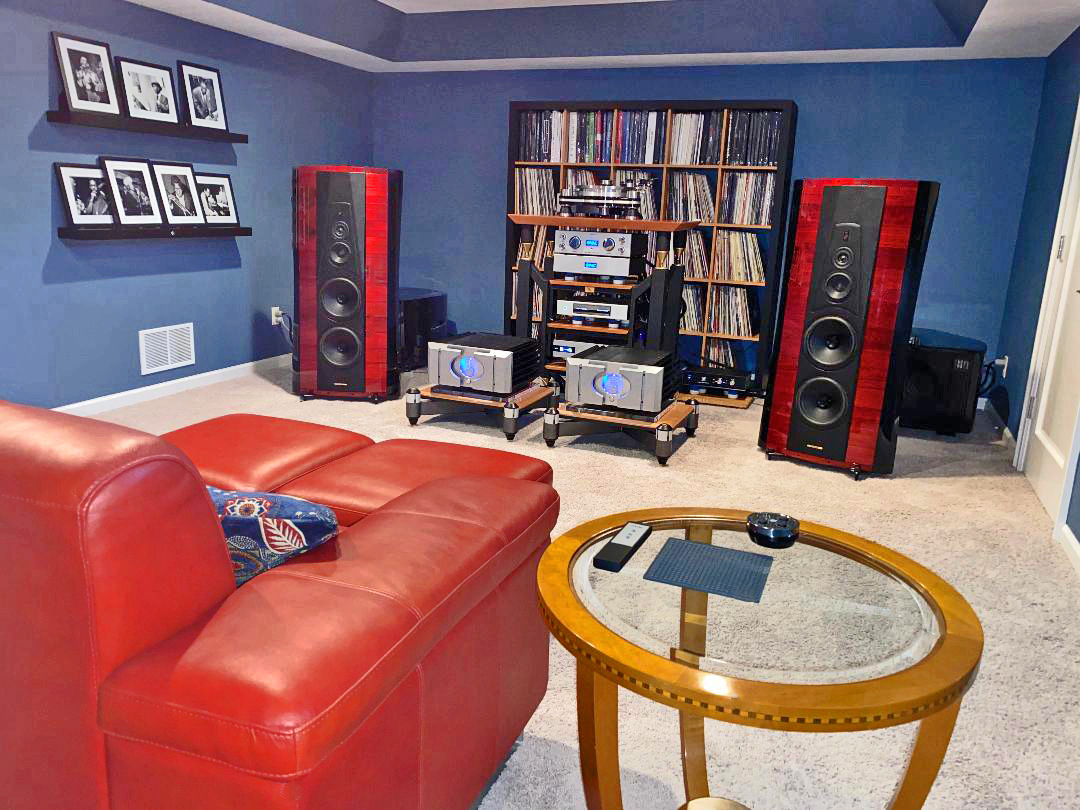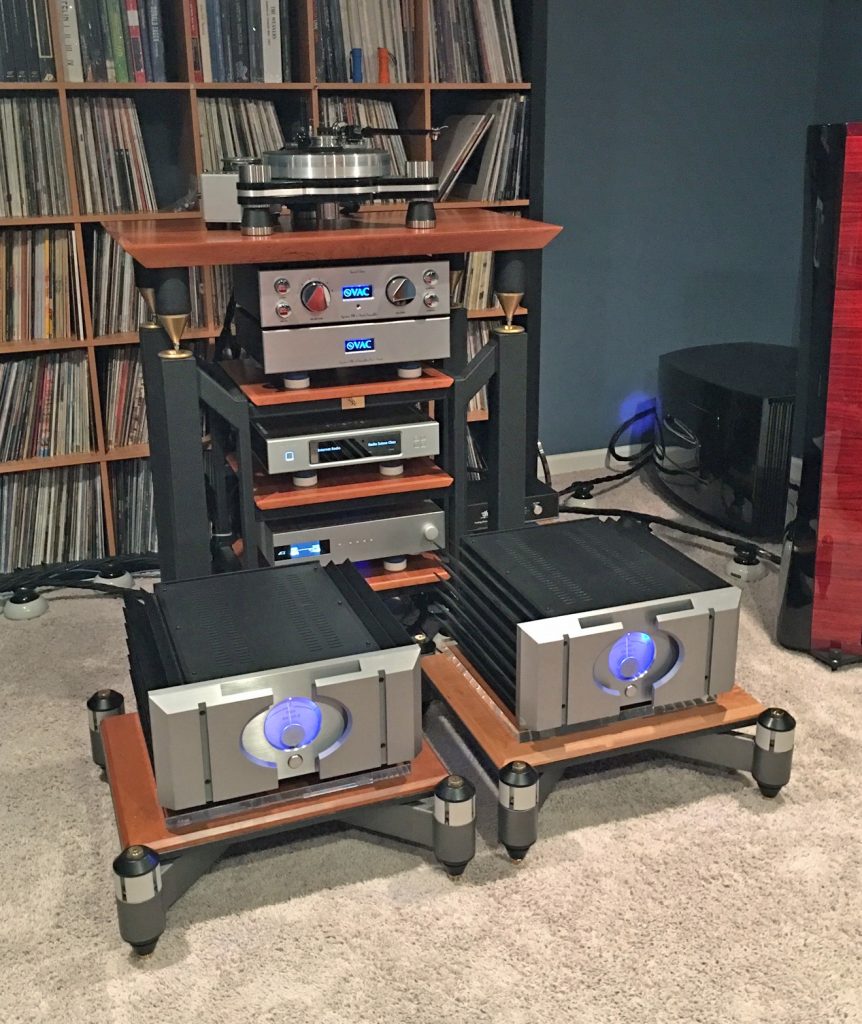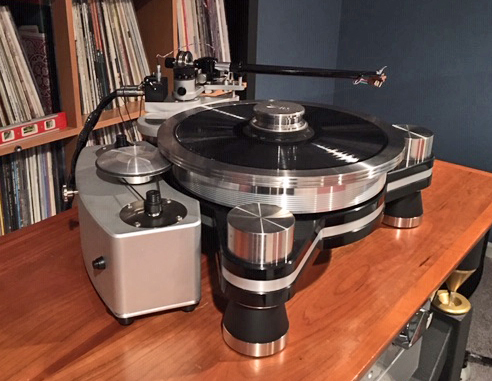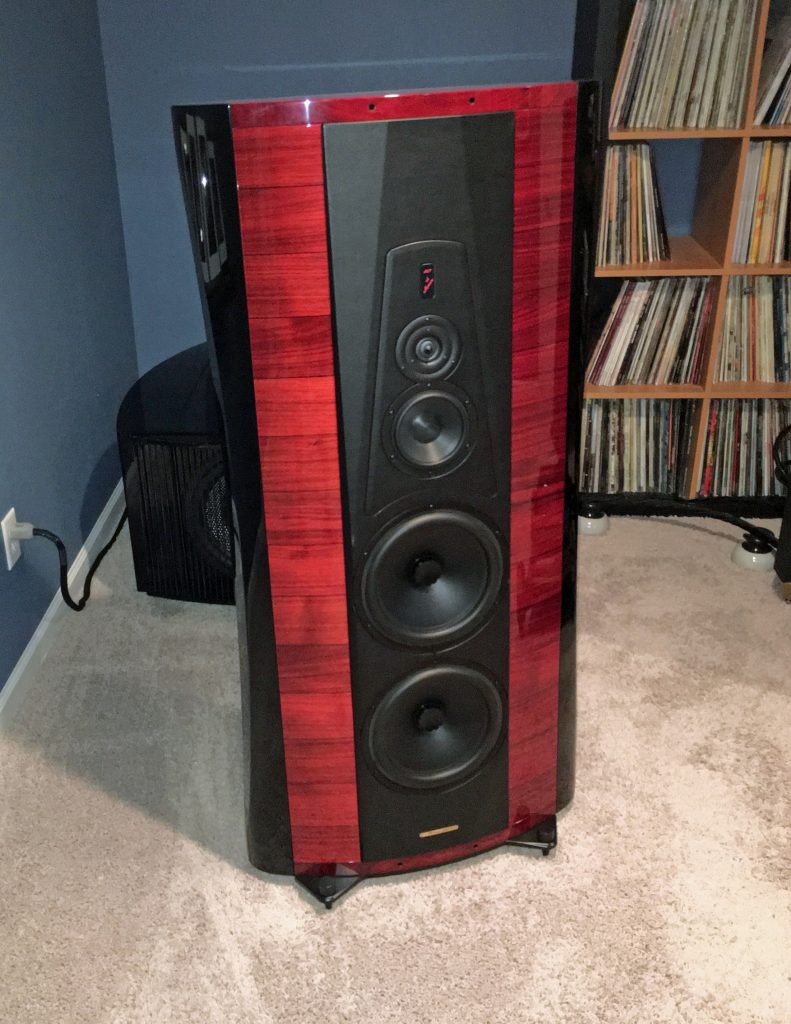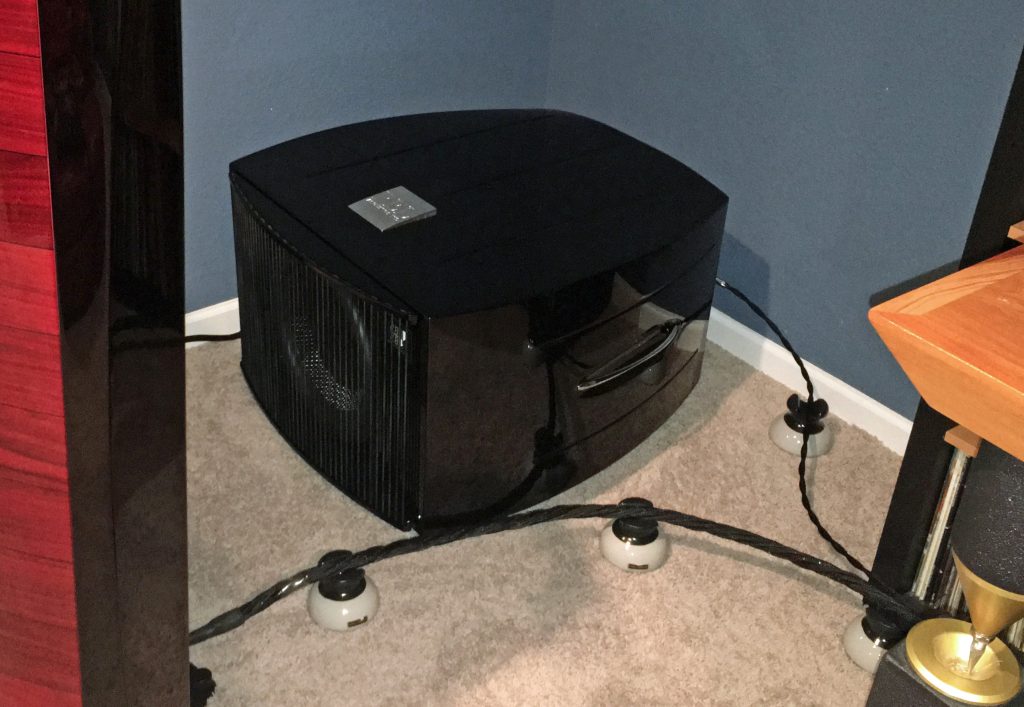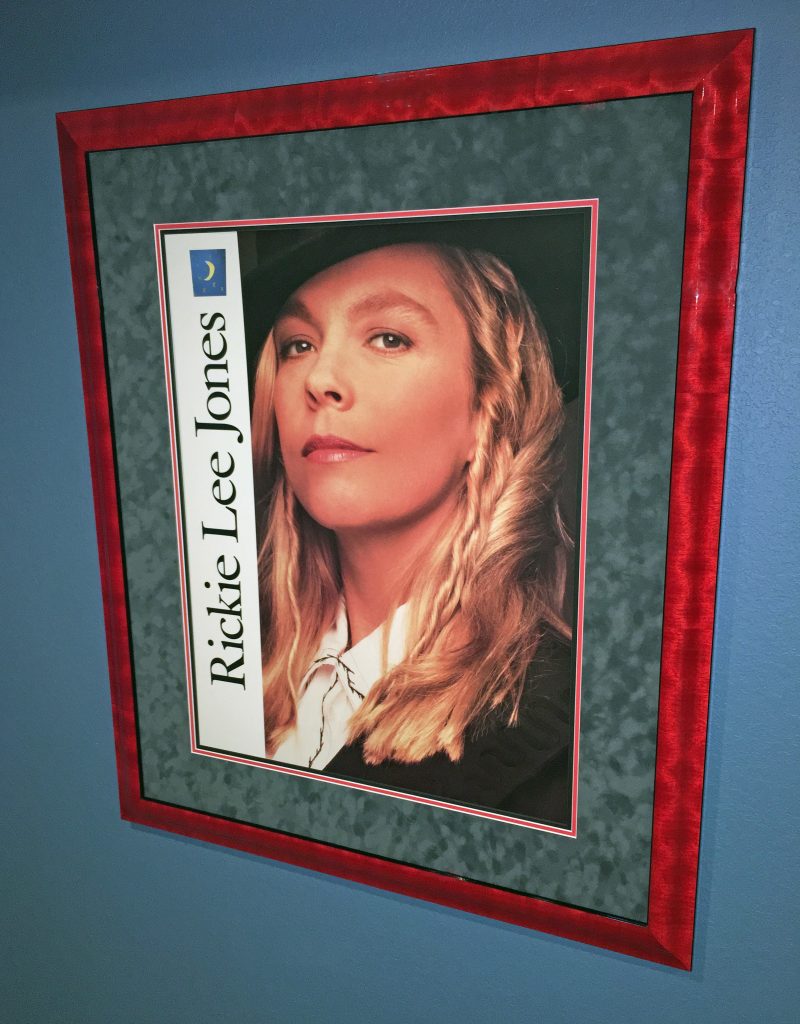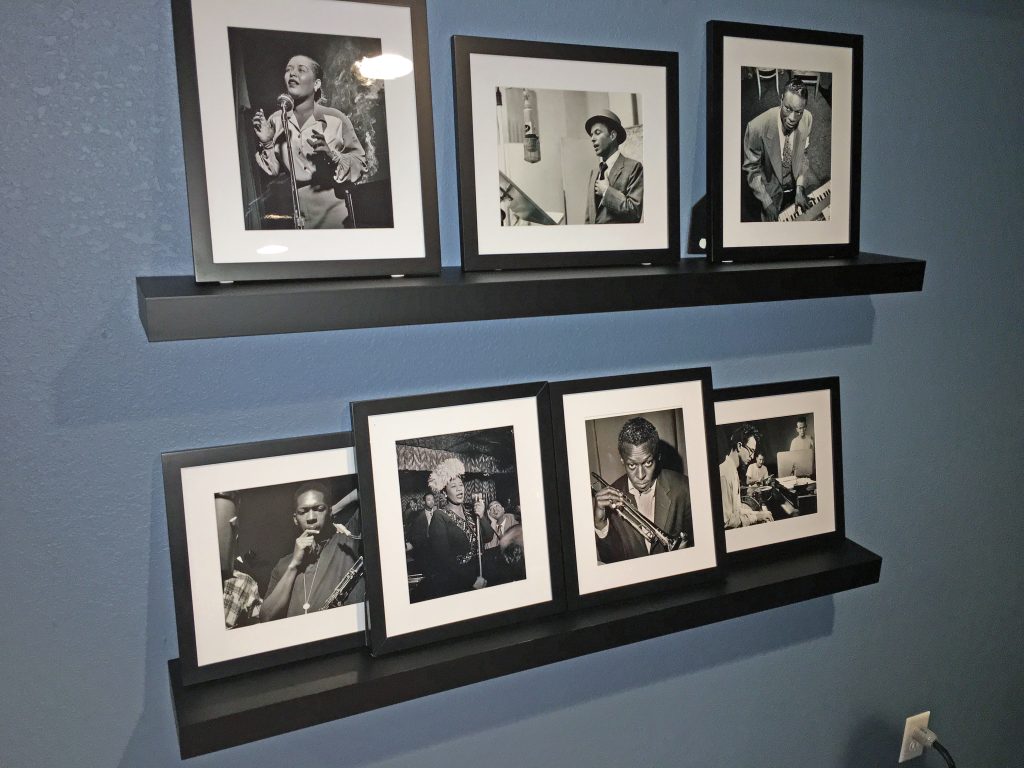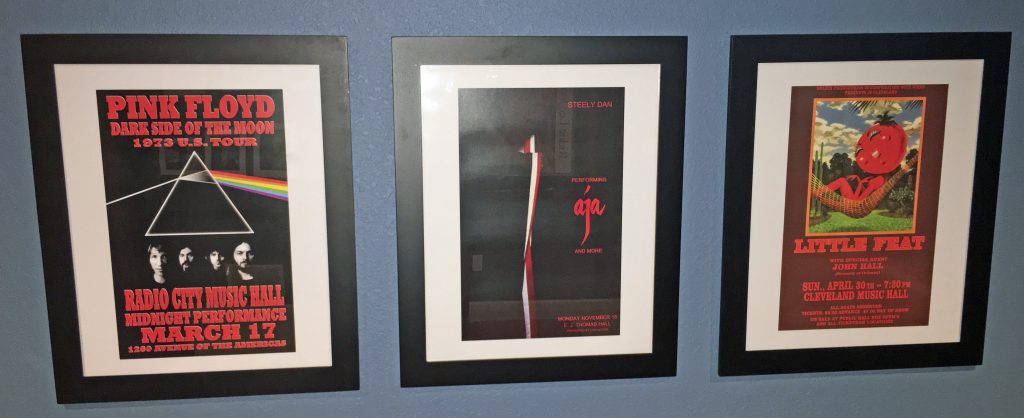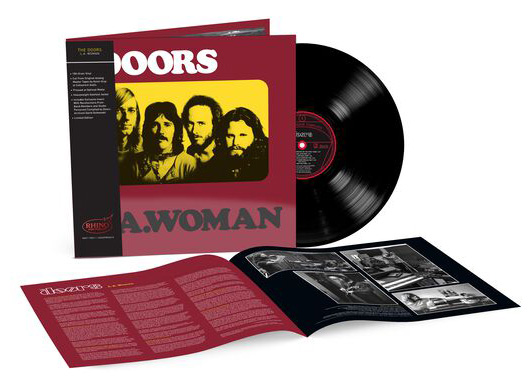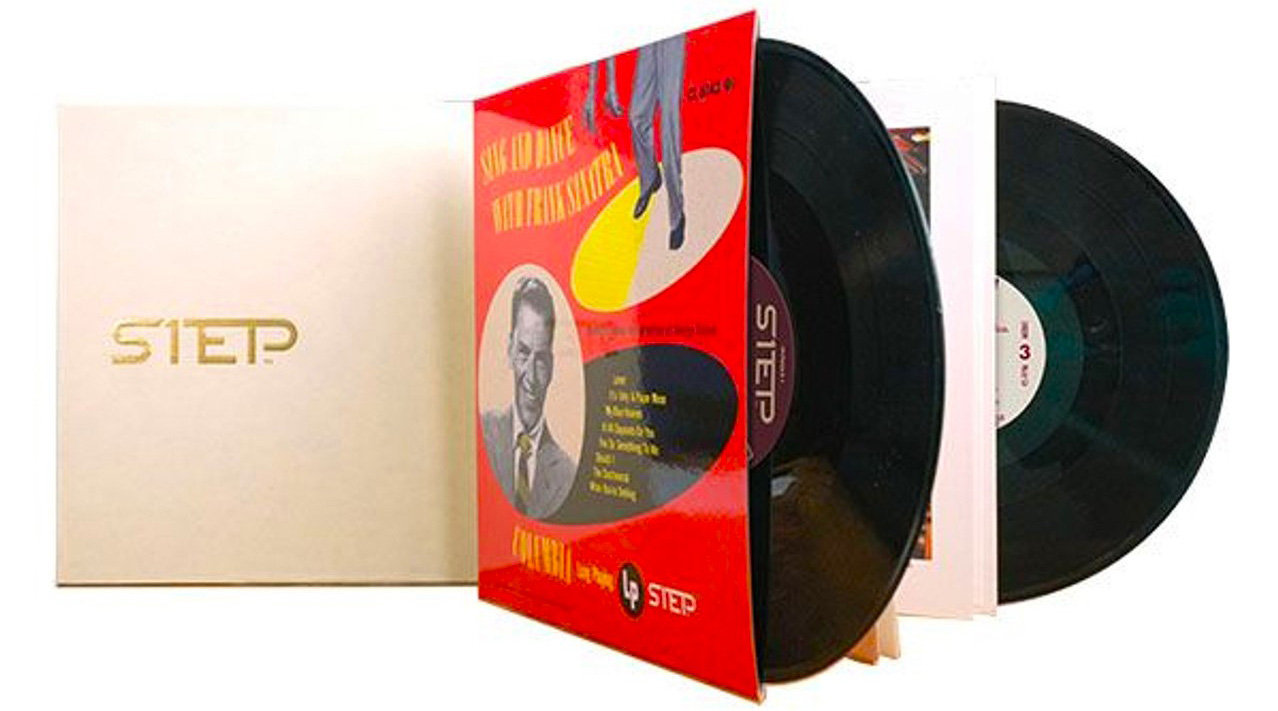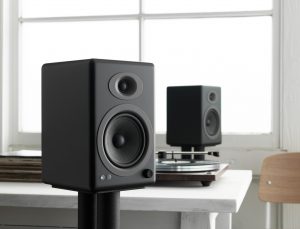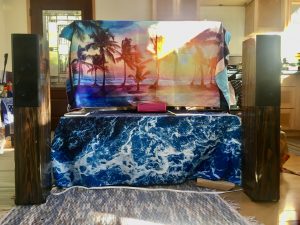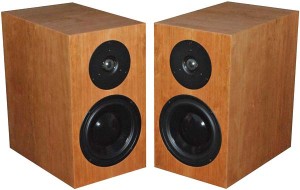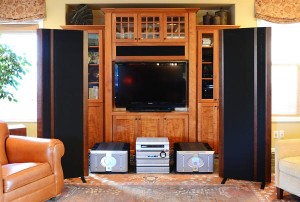
I have owned several iterations of REL subwoofers over the years. Either as a single unit or in pairs. My first was the Stentor III at 133 lbs, 300 RMS per channel, a single 10 inch downward firing woofer and a MSRP of $5K. I then upgraded to the Studio III which was the top of the line at the time at 205 lbs, 500 RMS per channel, two 10 inch downward firing woofers and a MSRP of $9K.
I followed that with a pair of Studio III subwoofers. I matched them up with great success and with a broad range of both monitors and full range speakers at many price points. This included models from Sonus Faber, Vienna Acoustics, B&W, Magnepan and Avalon. All were wonderful combinations.
The new flagship REL Gibraltar G1 ($4499) and G2 ($3499) subwoofers have taken performance to a newer higher level of sound quality and execution. At 2014 pricing, some might consider the G1 and G2 a bargain compared to the Stentor III and Studio III who many rated the best in their day and are still considered classics. Here is an excellent example of new technology and new flag ship products where the price and performance ratio have become even more cost effective and the sound quality even more impressive.
I was at Axpona 2013 in the Chicago suburbs when I heard something quite extraordinary. A pair of Sonus Faber Futura speakers were matched up with four REL G1 subwoofers—a stacked pair for each channel. Despite the show conditions, I found the sound to be excellent with a huge soundstage and a level of realism that was very compelling. I reviewed the Futura's earlier that year so I was familiar with what they could do - one of the best in their price range. The combination left me with a feeling that system performance had been improved in almost every way.
I have not experienced it personally just yet, but apparently if four is great, then six is even better. REL has been demonstrating "Six Packs" of Gibraltar subwoofers with two stacks of three subs for each channel at various shows. Again, primary speakers have ranged all over the map. Six Packs have also been set up at several elite dealers across the country with clear cut results and feedback. Opinions from reviewers and friends whose ears I greatly respect have not only been raving about this new system strategy and configuration but they have also put their money where their mouth is.

Despite the excitement circulating around the Six Pack configurations, I decided to go with two G2 subwoofers as a start for this review. A two sub configuration is something that I am very familiar with and would provide me with a much more fair comparison to past systems. For my specific listening room and primary speakers, the G2 was recommended by John Hunter (REL principle owner). Please see additional information regarding this choice in the Sound section of this review.
Review System
-
Magico Q7 Speakers
-
Pass Labs Xs Preamplifier
-
Pass Labs Xs 300 Monoblock Amplifiers
-
Playback Designs MPS-5 CD/SACD/DAC
-
VPI Aries Extended Turntable
-
VPI 12.6 Memorial Tonearm
-
Van den Hul Frog Cartridge
-
Synergistic Research Element CTS Power Cords, Interconnects and Speaker Cable
-
Synergistic Research Powercell 10 UEF & FEQ - PowerCell Equalizer
-
MIT SL-Matrix50 Interconnects and SL-Matrix90 Speaker Cables
-
SRA VA Turntable Isolation Base
-
Rix Rax Hoodoo Component Rack
-
Magico QPod Footers
Caveat Emptor
System synergy and personal taste are critical when evaluating high-end audio products. This review is based on my subjective requirements, my subjective ears, my specific system and my specific listening room. These combinations of components are only a few data points of many that exist out there. For further insight into my personal biases, click on my name above. Please consider my comments and analysis appropriately.
REL G2 - Design
The G2 features a Class A/B MOS-FET amplifier design of 450 Watts utilizing impressively large power supplies and transformers. Many subwoofer brands are transitioning towards Class D amplifiers. There are positives and negatives for both design philosophies, yet there are still many strong believers in Class A/B. Though in general it can be a more expensive solution, many will argue that it is still the better sounding implementation for all applications - especially for two channel music reproduction.
A front firing ten inch carbon fiber woofer is used for minimal weight, maximum stiffness and tremendous speed. Compared to other designs, this driver can deliver a stroke of up to 1-3/4 inches which helps to generate and support the air volume and speed needed to keep up with today's finest speakers.

At 84 pounds and with dimensions of 20" (W), 16.4" (H), and 24" (D), the cabinet size and presence is significant - but in a very good way. We are talking high quality eye candy here. I would rate the aesthetic design of the G2 cabinet with the very best. An interesting contemporary look with a beautiful piano black lacquer finish and a unique curved profile. The silver feet and REL emblem standout in an understated and elegant way that makes the entire design feel very classy and tasteful.
The G2 comes with an attractive multi-function remote control that allows you to adjust gain, crossover, and phase. A LED display for these settings is centered just below the cabinet baffle and can easily be seen from a decent distance away. For me, this is a huge differentiator from other designs. During initial setup, you can sit comfortably in your prime listening position and make all your long term setting decisions for each variable. Without a remote, nothing is worse than jumping back and forth during music playback and second guessing yourself after each adjustment. And during normal listening, if you want to goose the bass just a tad when John Enwhistle isn't sounding quite loud enough on a particular track, it's just a quick change on the remote without moving your bumm one inch. Changing it back is just as easy.
Though this review will focus on two channel audio only performance, the G2 can also be set up for home theater applications. The G2 provides a dedicated Low Frequency Effects (LFE) channel that will support AC3, Dolby Digital, DTS, MPEG2 and most other digital sound formats. RCA and XLR inputs are provided for this feature. It also has a dedicated input level control, which enables users to set the LFE level independently of the controlling processor.
When it comes to REL, the most important design feature for me has always been the functionality or mode for High-Level input. For ultimate two channel performance and music reproduction, the signal is taken directly from the amplifier speaker terminals allowing for a much more natural transition and integration with your primary speakers. A Neutrik connector and cable is provided for this application. There is no need for an external crossover device which can bring its own distortion, cabling and system synergy issues along for the ride. Again, you can set the cross over point and gain level to your own taste via the remote and on the fly.
G-2 Specifications
-
Type: Closed Box, Front Firing Woofer
-
Drive Unit: 10 inches, 250mm Long Throw, Carbon Fiber Cone
-
Lower Frequency Response in Room: -6dB at 18Hz
-
Input Connectors: High-Level Neutrik Speakon, Low-Level Stereo RCA, LFE RCA, LFE XLR
-
Output Connectors: High-Level Neutrik Speakon, LFE RCA, LFE XLR
-
Gain Control Range: 80 dB
-
Power Output: 450 Watts (RMS) Ultra High-Current Power Supply
-
Phase Switch: 0 or 180 degrees
-
Amplifier Type: Class AB
-
Mains Input Voltage: 220-240 Volts, 110-120 Volts For Certain Markets
-
Dimensions (Including Feet): 20" (W) x 16.4" (H) x 24" (D)
-
Net Weight: 84 lbs.
-
Supplied Accessories: Power Cord, Neutrik Speakon Interconnect, Remote Control
Set Up
David Schultz from REL came by my home to help set up the G2 subs. David was born and raised in the Midwest and it was like a homecoming for both of us. We had a buncha fun and I learned a great deal not only about subwoofers but also about system set up in general. The man is a true gentleman. His background includes an impressive level of experience with a variety of high end equipment during his many years of travel around the world. He is also as strong as a bull. You ain't seen nothing until you see one man on his back using a wall as leverage and moving 800 pounds of Q7 Speakers with only his legs and pure arm strength.
I am always open to new ideas and he had a few. First we moved the Q7s more towards the center of the room. Interesting. Bass was still excellent but things opened up a bit. Then we played with the listening position until we found a sweet spot for frequency response and imaging. I was impressed. The sound in my room was always excellent but now it was slightly more focused and three dimensional.
Lastly we huddled and talked about subwoofer placement. The traditional setup process for all my past REL configurations was to place the subs in the rear corners and work from there. Recently, another option has become popular and quite effective. This option places the sub or stack of subs (remember the Six Pack) slightly behind and to the outside of the primary speakers.
The Q7 speakers are an ideal candidate for the later strategy based on John Hunter and David's recent experience with other premier speakers (including David's own Rockport Technology Avior's). The problem was that my room was just not wide enough. We ended up putting one Q2 behind each Q7 in the rear corners. Folks, the initial results were so impressive that I cannot even imagine what a six pack next to each Q7 might possibly have sounded like.
David slowly but surely moved and angled the subs inch by inch and then in even smaller increments to find the best spot for maximum bass energy and output. Once settled in, he also played with phase to again maximize bass output.
Then the tweaking and repositioning entered phase two. The music used for set up was primarily Jennifer Warne's Ballad of the Runaway Horse and the soundtrack for the movie Sneakers. David also used a CD entitled XX which I found not only useful for the setup but very eclectic and entertaining. The general idea is to slowly reposition the subs so that you can center the vocal image and that both halves of the image are equal in size and output and to then again maximize bass output. All of these music tracks provide a consistent and easily audible bass line over several minutes so that you have plenty of time to listen, reposition and adjust.
The last step was to dial in your crossover point and gain for each channel. David cautioned me that gain would probably change over the next few weeks as the subs broke in. Again, it was such a pleasure to have the remote control so that I could just sit tight in my listening position and tweak both settings without running back and forth to each sub. The end result was interesting in that each sub was positioned in a slightly different angle and location in each corner. Also, the gain and crossover points were also slightly different for each sub.
I should mention that the user's manual has a much more detailed explanation of the above process. I found the user's manual to be of the highest quality, with plenty of valuable information and guidance. Just as important, it is well organized and easy to understand.
Sound
My intent is not to sound overly dramatic, but from past experience, I have not heard any speaker, full range or otherwise, that has not benefitted from REL subwoofers at all frequencies when properly set up. Let me qualify this. Specifically, this goes back to the Stentor III and flag ship Studio III models where I used them with great success with at least a dozen high end speakers over several years.
However, I was curious about using subwoofers with the latest generation of speakers that have recently been rolled out with so much deserved fanfare. Industry wide, there has been a definite if not tremendous improvement in the speed, dynamics and resolution of many designs including those from the brands mentioned earlier in the review. I wondered if the new generation of REL Gibraltar subs would be up to the task.
John Hunter was also excited by the challenge. When I mentioned the Magico Q7 speakers, no further discussion was required. This was going to be an interesting partnership and review. Based on room size and other factors, John did suggest that we use the G2 subs. When talking crossover filter networks and rise time specifications, the Gibraltar's can compete with any subwoofers in the industry. Again, it was suggested that two would be nice and six would be even nicer.
The results when using just a pair of G2 subs were fairly straight forward. Even with the Q7 speakers, which many consider one of the finest full range transducers available today (please remember my earlier words about subjectivity and biases), the combination was captivating. Authority and weight at the low end did benefit, but it was the improved level of ambience, spatial cues, soundstage, and both macro and micro dynamics at all frequencies that will amaze you. These variables are what the Q7 speakers are known for on their own and differentiates them from much of the competition, so this statement should not be taken lightly.
One important design objective that has been consistent throughout my many years with all of the REL models, is that the combined output must compliment and reinforce the character of the primary speakers. This proved true once again when mated with the Q7 speakers. I noticed that even when experimenting with several amplifiers, the change from amplifier to amplifier did impact the system sound significantly, but the flavor and personality of the specific amp/speaker combination did not change when adding in the G2.
As far as cross over and integration issues, I found very little if anything to even comment on. In High-Level mode and when utilizing the crossover and gain controls, I was able to pretty much tackle even the most subtle integration issues. And I do mean subtle. I found it very difficult to find any anomalies, and this was only after some very intense long listening sessions where that was the entire focus and objective. After final adjustments and for normal listening, the sound was seamless.
Several friends who are very familiar with my system and whose ears I trust, dropped by many times over several weeks and found the consistency and transition from top to bottom a non issue. On the other hand, they also found the enhancements mentioned above to be clear and absolutely astonishing, again after considering the bench marks that the Q7 speakers had defined on their own.
One more suggestion for auditions and future potential owners. After everything is set up to your satisfaction and when you are confident that all is well, have some listening buddies help you with a quick and simple test. For example, with a two sub configuration like mine, have each stand next to one of the subs and then have them disconnect the Neutrik connectors in unison while you stay seated in your prime listening position. The sound stage will significantly subside. The dynamic shifts and excitement that stood out just seconds ago will take a few steps back. Inner detail and resolution at all frequencies will seem less vivid and immediate. Reconnect those Neutriks and all will be well again.
Music

Talking Heads - Stop Making Sense
One of my all time favorite live concert albums is the soundtrack Stop Making Sense by The Talking Heads. Directed by Oscar winner Jonathan Demme, the movie is even better as the additional visuals generate even more energy and excitement as these folks can really boogie and fly across the stage. You can tell they are having the time of their lives. Every couple of years the movie is distributed across the country for short runs at some of the smaller independent movie houses. Check it out if you can. I highly recommend it for both performance and sound.
I would loosely define this concert as a greatest hits set with classics like "Burning Down The House", "Once In A Life Time" and "Take Me To The River". "Slippery People" is a standout with a full stage of musicians and singers well beyond the original four band members. There is a lot going on here yet the Q7/G2 combination pulls it all apart and defines the experience instrument by instrument and singer by singer like I have never heard it before.
Tina Weymouth on bass and Steve Scales on Conga Drums are the stars here. The bass line is so thick and weighty with such an abundance of PRAT (pace, rhythm and timing), that you can't help but get up and dance around the room. So much air is moving through the room that this is one of those tracks where you might just start looking for a hammer and some nails to hold down the pictures on the wall. With the Q7 and G2 in charge, you may start hearing room rattles and vibrations that never seemed apparent before. Talk about a fully pressurized listening room!
When the conga drums kick in and the sound board technician moves them across the stage with some type of strange aural effect, you can't help but notice the inner detail and slam that seem to just jump out at you. You can actually hear the variations of stroke and technique as Steve Scales alternates between Open Tone (four fingers near the rim) and Bass Tone (full palm). I have read reviews about sensing the tightness and vibrato of the leather on a drum or conga head, but I have never really been sure of what I was hearing. On this track and with this system, you can definitely hear that level of texture and resolution.

Wilson Audio - David Abel and Julie Steinberg - Beethoven and Enescu Sonatas
In addition to Stop Making Sense, I could utilize any number of recordings to demonstrate the impressive bass performance that the G2 can provide. I'd rather now focus on something more simple and elegant to demonstrate how the G2 can present the ambience, spatial cues, and micro dynamics that I mentioned earlier.
I was very excited to hear that Wilson Audio is working with a number of on-line companies to distribute their original catalog of recordings from the 1980s in various high resolution formats. David Wilson is well known for his world class speaker designs, but he also deserves much praise and credit for these recordings too. They deliver some of the most spectacular sound that I have heard in any format.
I still have my original CD of the Beethoven and Enescu Sonatas as performed by David Abel on violin and Julie Steinberg on piano. As far as chamber music goes, this is as good as gets. The musicians are obviously very talented, but it is also hard to ignore that we are listening to some very unique instruments in a very small exceptional recording venue. This includes a nine foot Hamburg Steinway grand piano and a Guarneri violin built in 1719 by the masters in Cremona Italy. If you seek the ultimate test for simple miking, natural acoustics and accurate harmonics, you have come to the right place. I have been told that the original LP is even better.
Via the Q7 and G2, this is one recording where everything in your listening room disappears and holographic like images are just left floating in front you. The space around the violin seems so very clear and vibrant and alive. You can sense not only the sweet resonance, tone and pitch of the strings, but also the woody textures and weight of the instrument's body. Many systems will push the sound in one direction or the other, but here we have a beautifully balanced three dimensional presentation.
Like the violin, piano is also a very difficult acoustic instrument to reproduce and get the proper amount of bloom and authority. There is no muddy overhang here. Each stroke of the keyboard yields a rounded, full bodied and fleshed out tone - exceptionally fast yet almost dark and brooding during certain passages. Inner density and resolution are outstanding. This is definitely a bench mark recording, yet the Q7 and G2 take it to another level.
Summary
REL has another winner in the Gibraltar G2 subwoofer. It can complement even the finest speakers with additional musical information that can provide clear lifelike steps towards reproducing the real event. It is critical that each sub be properly set up. The process is an interesting combination of art and science, but the payoff is big. At these prices, I would expect your local dealer to be an important asset and guide. That Six Pack is now looking mighty attractive. If only I could get my Abs and bank account aligned for appropriate support and funding. Robert S. Youman
REL Gibraltar G2 Subwoofer
Retail: $3499
REL Acoustics America
800 Addison Street
Berkeley, CA 94710
510-990-6005
www.rel.net
[email protected]




